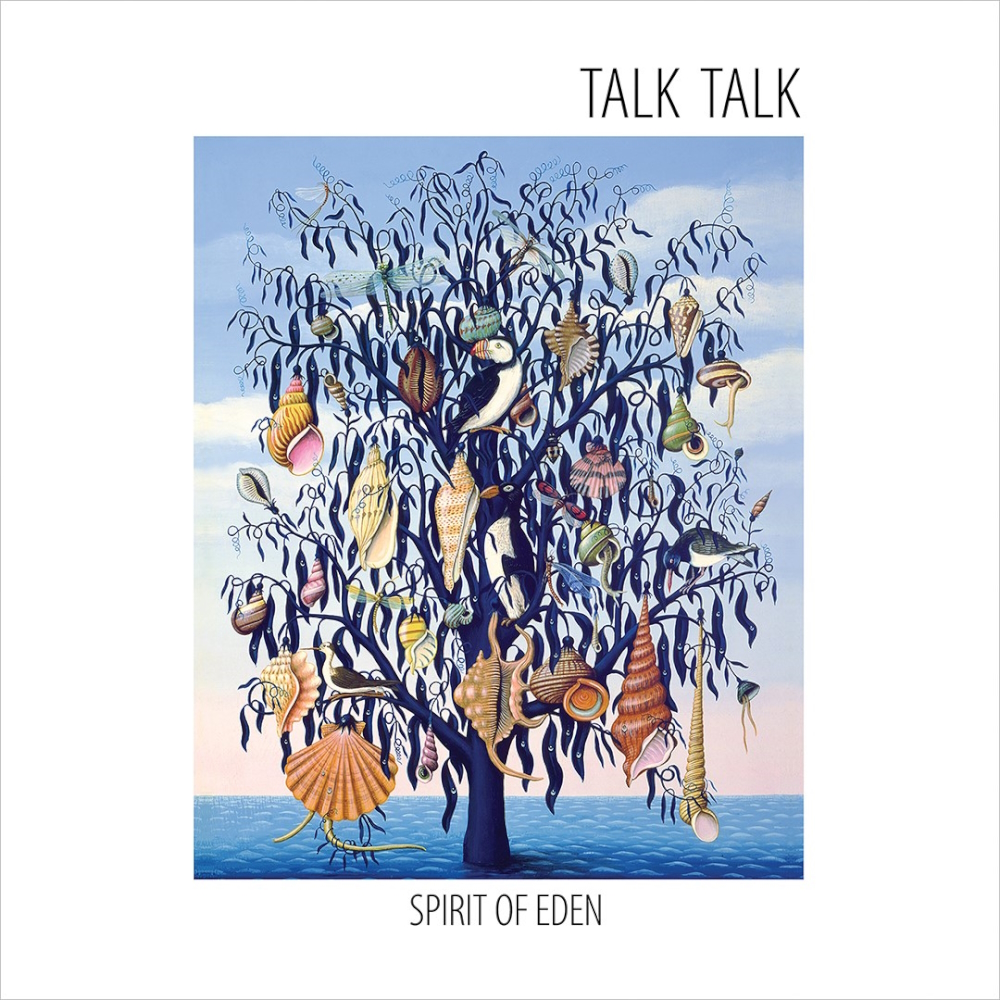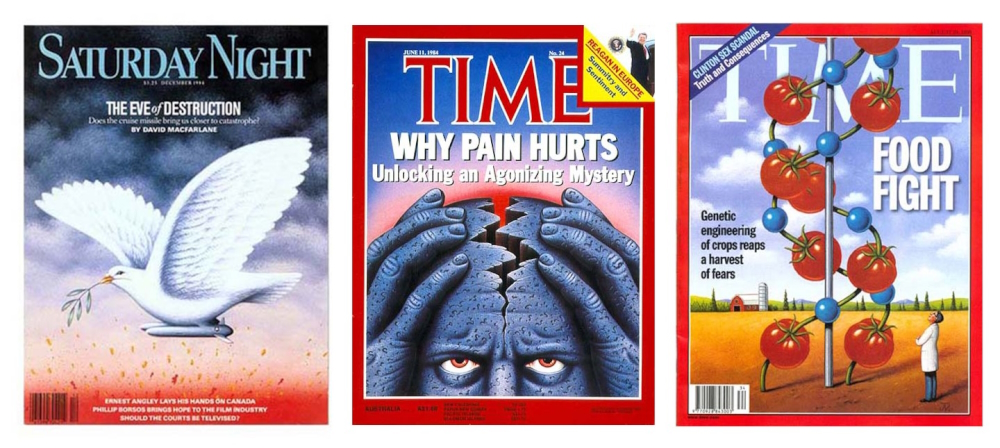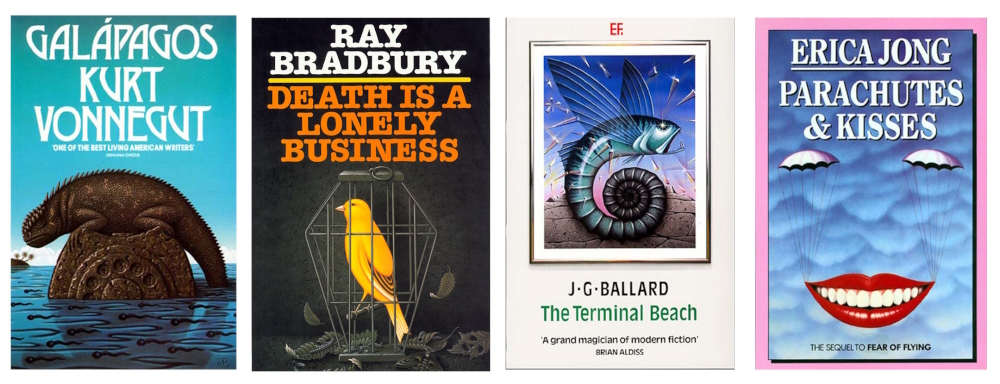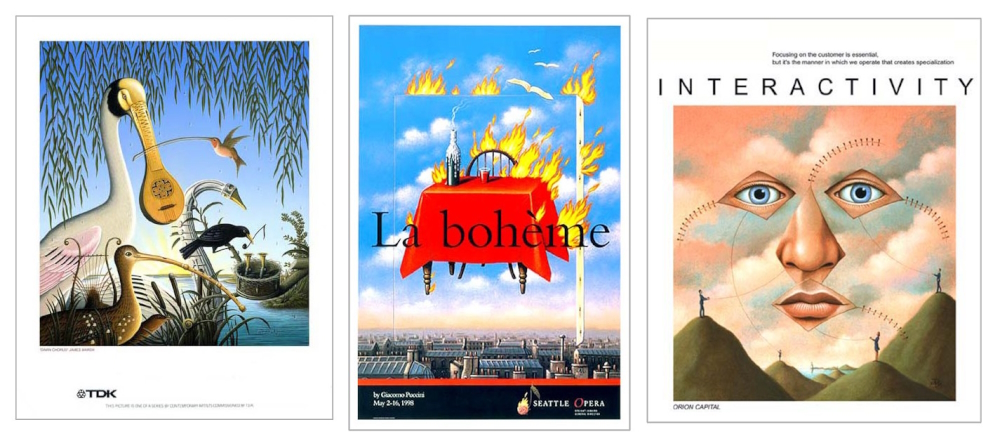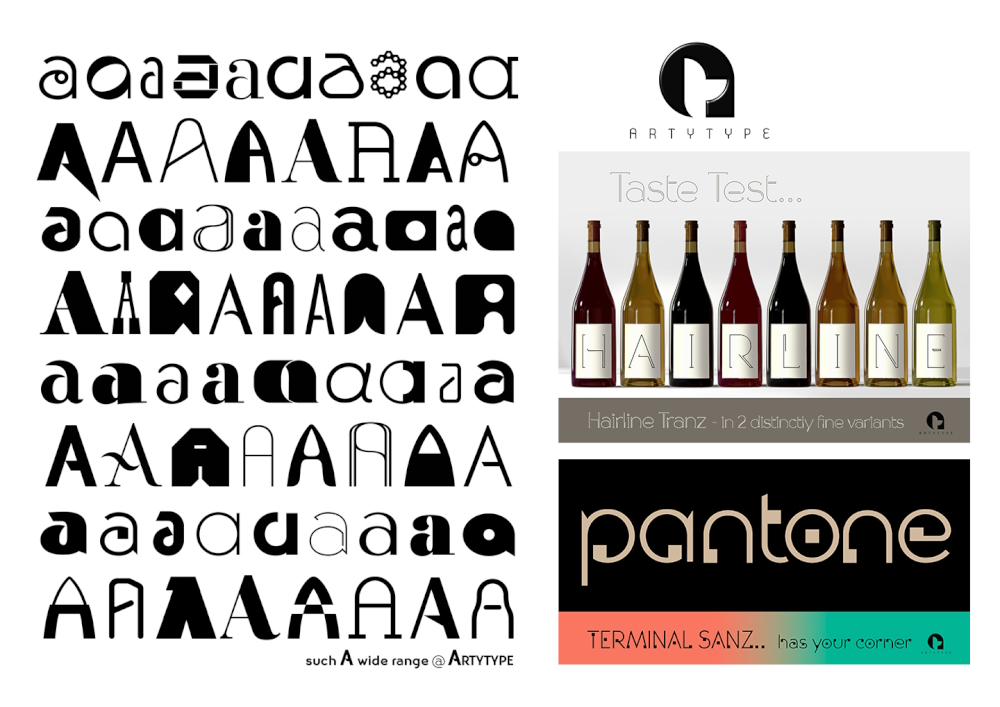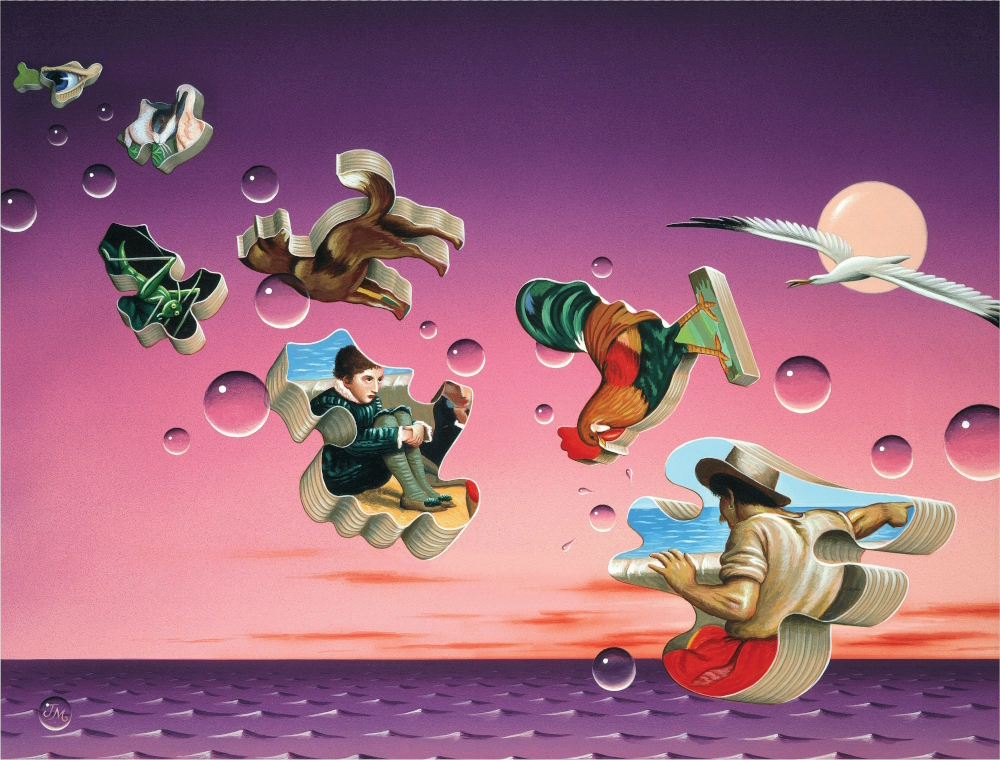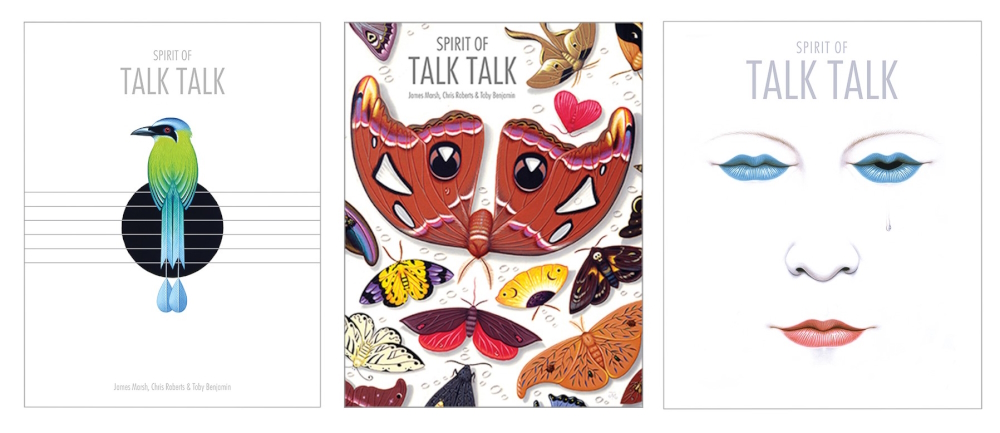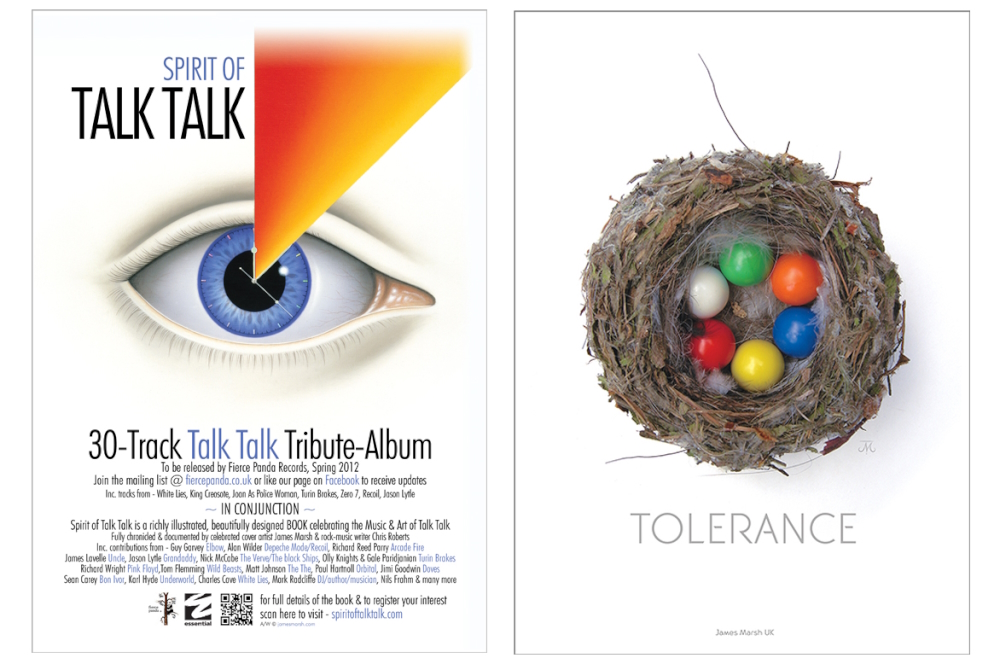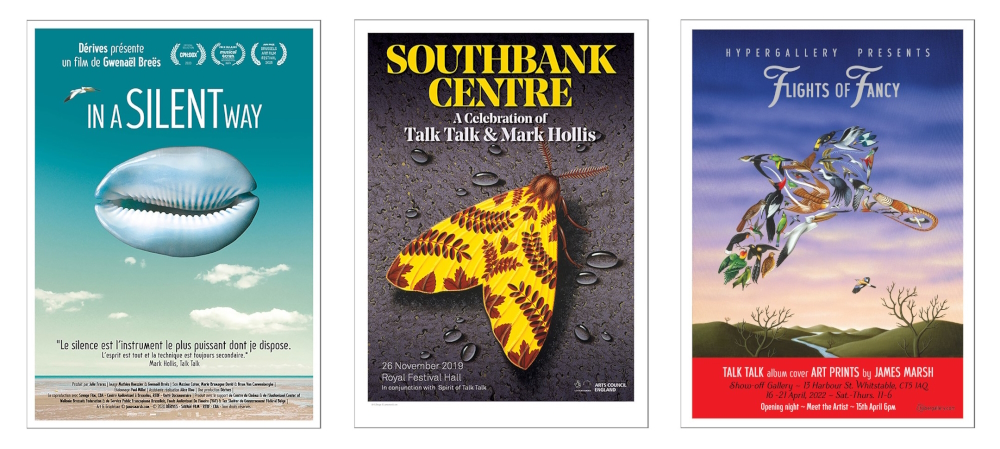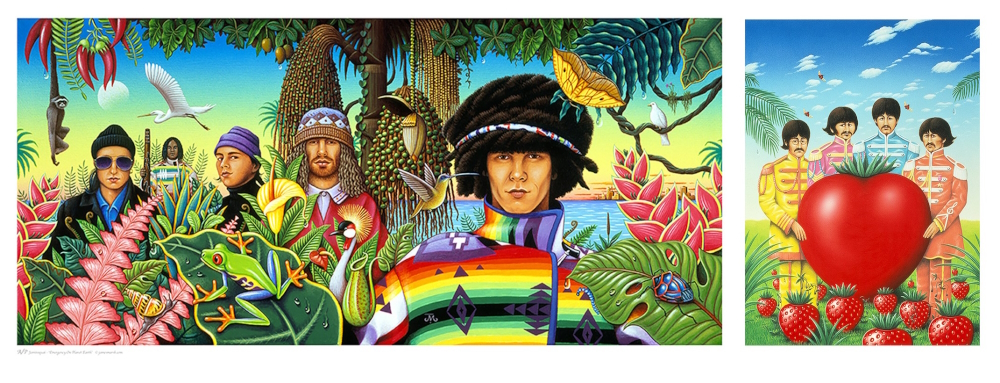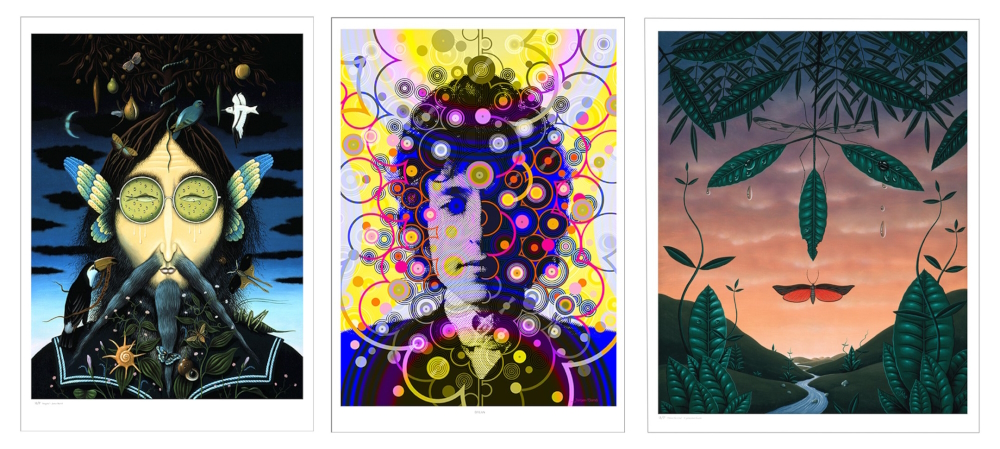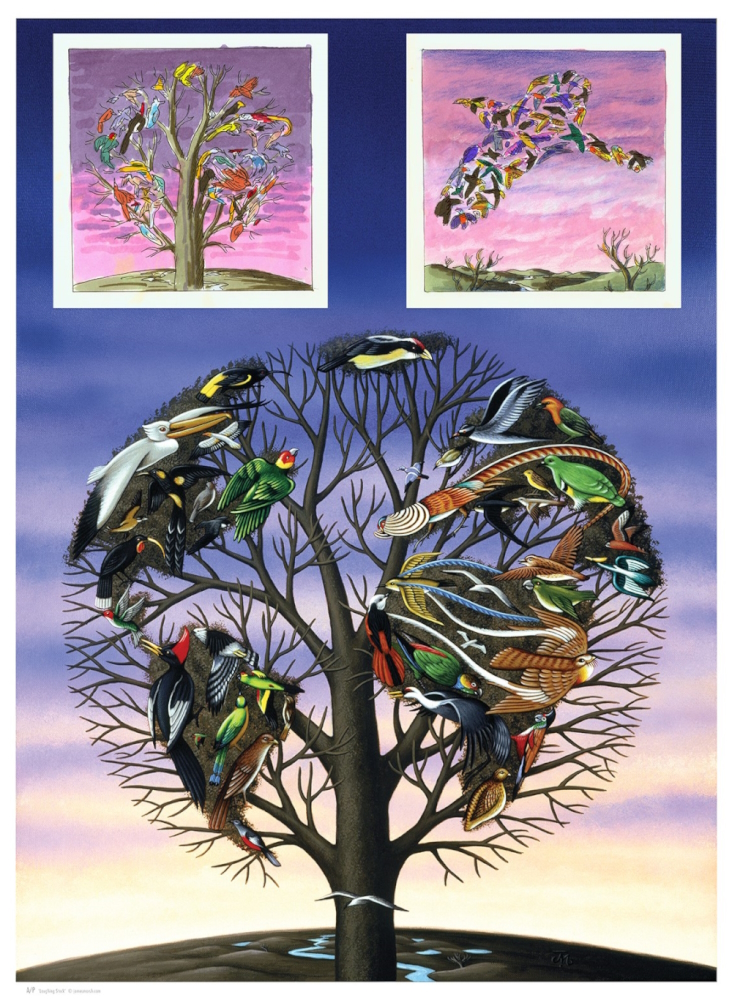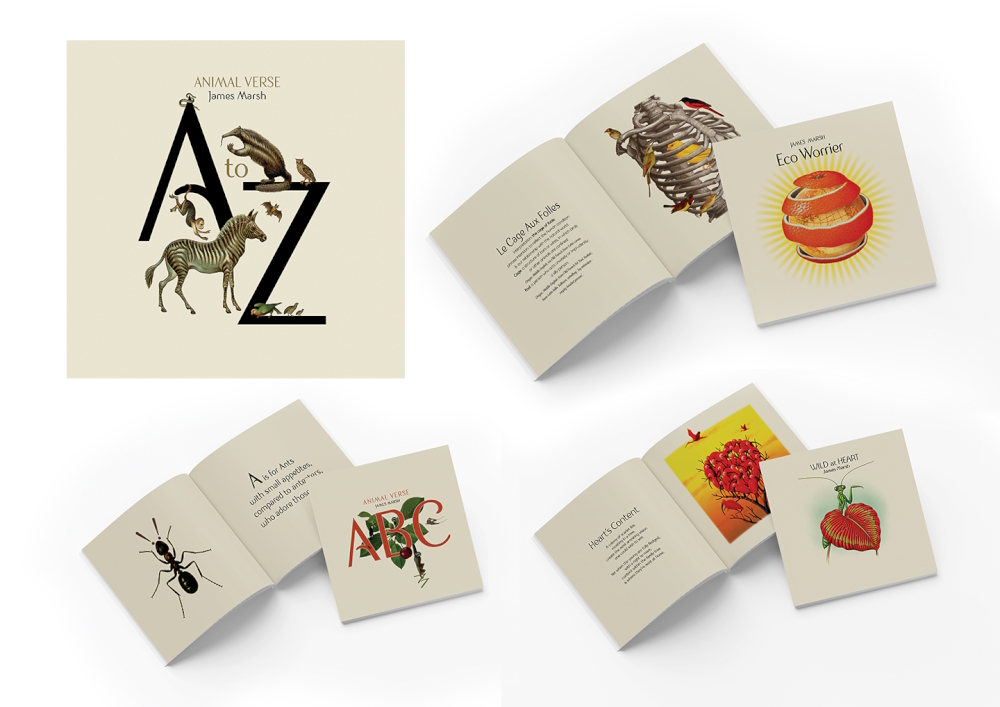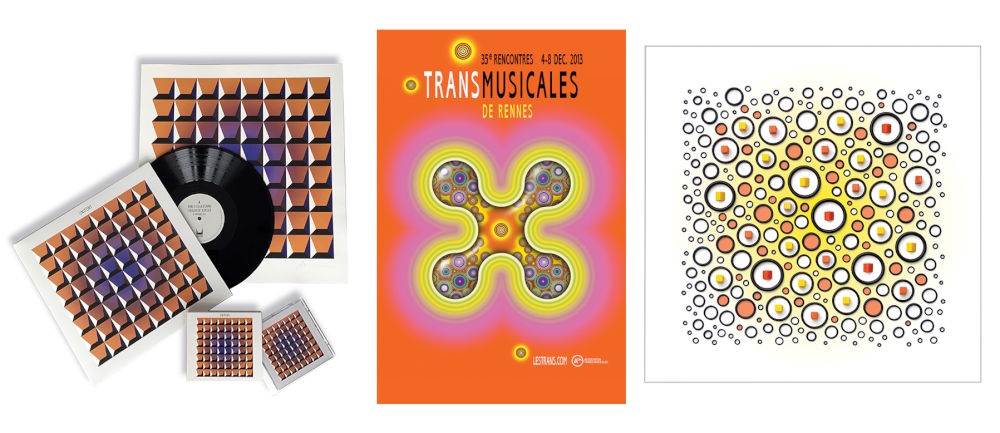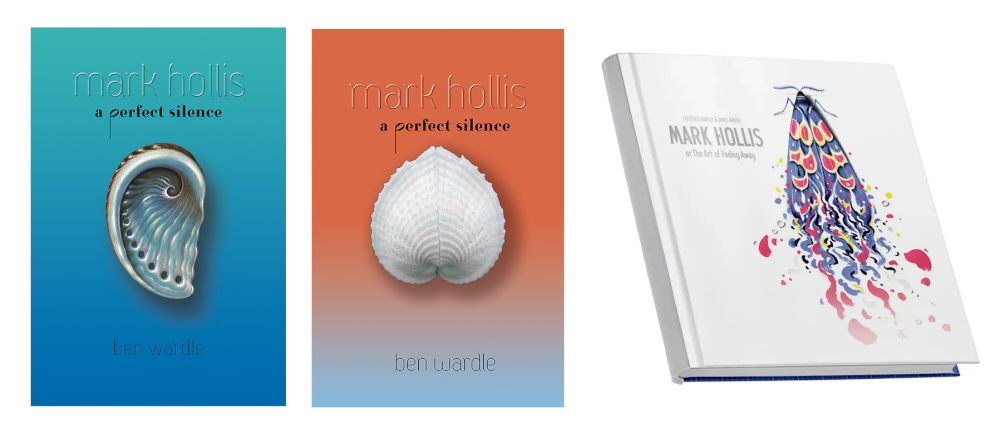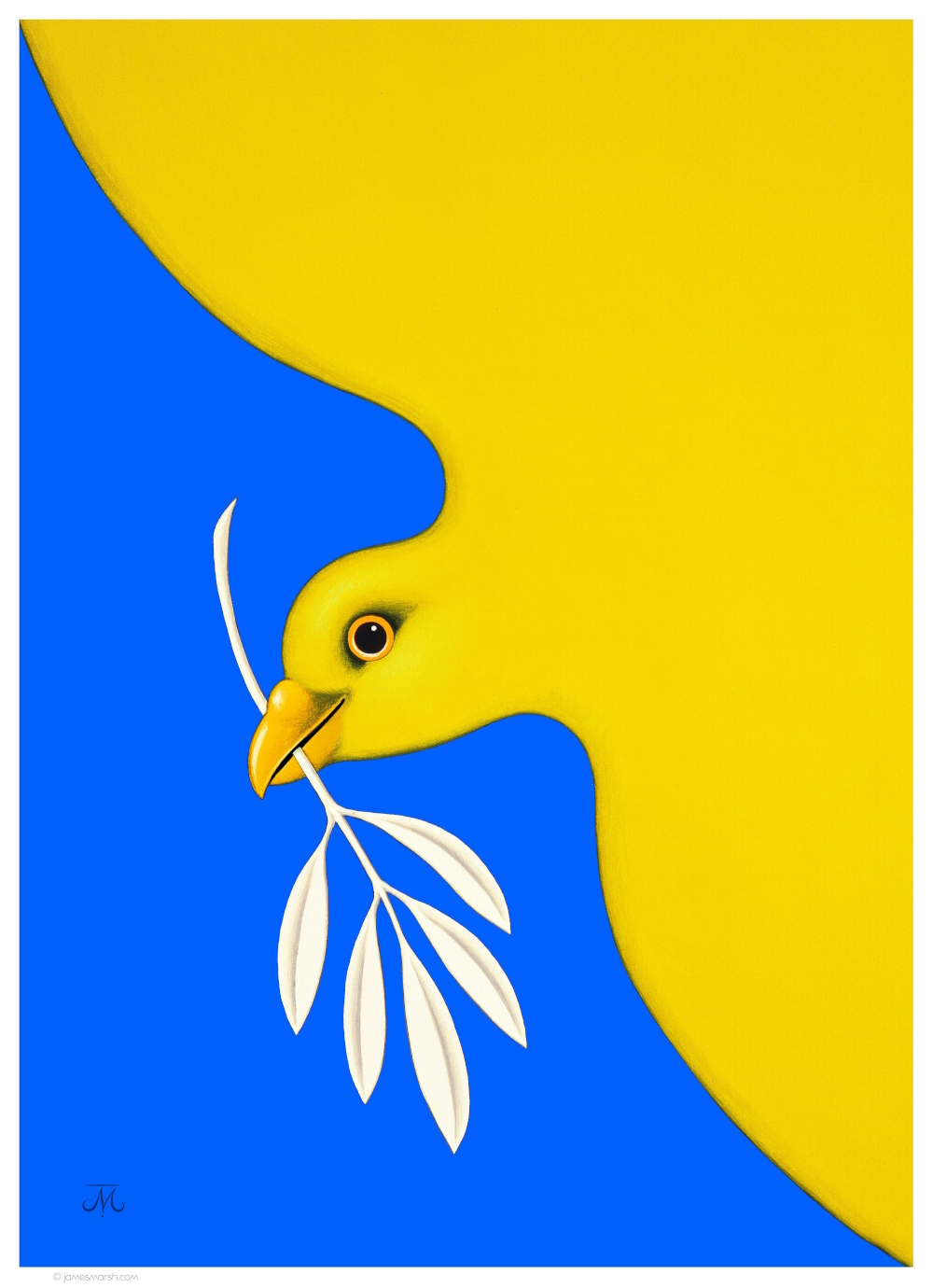James Marsh
Internationally Acclaimed Artist, Illustrator, Designer
Great Britain
Has created many covers for TIME magazine, plus numerous book covers for world famous authors, such as: Salman Rushdie, Ray Bradbury, Lewis Carroll, Shakespeare, Kurt Vonnegut et al.. Moreover working for such international companies as: Air Canada, British Airways, Courvoisier, General Motors, IBM, Mitsubishi, Peugeot, Seattle Opera & Time Inc. all underlining the status of this multi-faceted artist since the 1970s. But that’s not all, he‘s constantly evolving: creating personal abstract paintings, reliefs or collage work, including edition prints, as well as publishing his own unique range of fonts. The Independent Newspaper listed this much awarded man, “in The Top Ten Leading British Illustrators”. Yet despite a wide diversity of work, in all areas of the media, his name as a designer is mainly associated with a group that has stood the test of time: the popular British band Talk Talk, for whom he created all their iconic album cover, posters & single sleeves. They’re a 1980s pop band, whose leader Mark Hollis “certainly didn’t want to be presented in the typical of style of the day, which was pretty boy photos on the front of album covers”, as expressed by their visual spokesperson in an interview with rocket88books, “That was the main starting point for how not to illustrate them!”
James Marsh
Internationally Acclaimed Artist, Illustrator, Designer
Great Britain
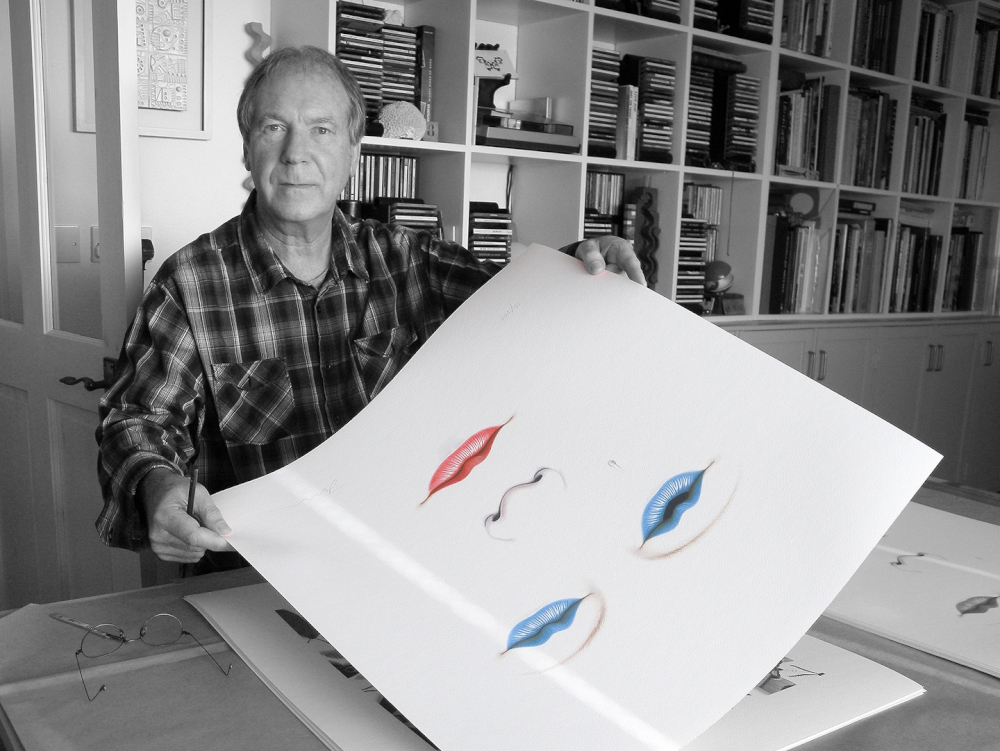
Interestingly, the source of James Marsh’s eclectic style stems from his childhood! “My parents said I always had ‘a vivid imagination’, ever since I was able to interact, so it would seem to have been inherent”, as quoted on testpressing.org. “I recall seeing faces in ordinary everyday things, such as clouds, curtains & shadows etc. dating back to my earliest memories. It’s probably having visions such as those, that would eventually evolve into constant recurring themes throughout my illustrative career”. This comic collecting boy, (Born 1946 in Yorkshire, Northern England) said “I collected ephemera throughout my adolescence, and beyond: cigarette & matchbox packaging, fruit labels, stamps. beer mats etc, basically anything that was attractive to me graphically was inspiring”.
This young, exceptionally talented student, studied Design & Display at Batley College of Art & Design in Yorkshire, graduating with a National Diploma in Design plus Y.C.F.E. Diplomas in Design, Display & Advertising. His first job was in the London art department of Pye Records in 1966, moving-on to Decca Records six months later to become Studio Manager, before joining illustrator Alan Aldridge, best known for his psychedelic artwork, on books & record sleeves by: The Who ('A Quick One') or Elton John ('Captain Fantastic') under the collective name of ‘Ink Studios’ in 1967. There James collaborated on high profile projects, from: ‘The Beatles Illustrated Lyrics’, to Andy Warhol’s ‘Chelsea Girls’ poster, showcasing his model making skills. This two year grounding became the basis for launching his own very successful studio partnership ‘Head Office’ with RCA graduate John Farman, from 1969 to 1976. During that period he co-founded the ‘Association Of Illustrators‘ in London, 1974. The artist switched to a solo career in 1976, and in 2002 moved from London to his “perfect working environment”, based on the UK‘s South East Kent Coast. Ten years on he was inducted into the American ‘Album Cover Hall Of Fame’. 2016 saw the release of a limited edition ‘Dylan’ print, created to coincide with the legendary singer/songwriter’s Nobel Prize.
James Marsh‘s cover artwork for Talk Talk, a hugely popular band in Europe, but not so much in the US, began in 1982 with their synth-pop-debut ‘The Party’s Over’. He remained their artistic frontman throughout those highly productive years up until the group split in 1991 - the influential post-rock-album ‘Laughing Stock‘ being their fifth and final studio-output. This visual journey can be seen in the acclaimed anthological book ‘Spirit of Talk Talk’, which he co-authored; now in it’s 4th imprint.
This all-round artist, who’s had “a preoccupation with nature - animals, birds & butterflies especially - that sets his paintings apart” (johncoulthart.com), had his first book published in 1991, titled ’Bizarre Birds & Beasts’; with a second book ‘From The Heart’ in 1993. In 2015 he released his first limited edition book ‘A to Z Animal Verse‘, followed by a second in 2017, ‘ABC Animal Verse‘. Two years later Marsh created an ‘Eco Warrior‘ video to help raise climate change awareness. Yet another edition book ‘Eco Worrier’, came out in 2020, followed by ‘Wild at Heart’ in 2021.
A further example of his social commitment is the Ukraine charity NFT for the United Nations High Commissioner for Refugees.
James Marsh, who describes his mixed-media work as “eclectic”, loves experimenting in his lofty studio, complete “with a panoramic view overlooking Hythe Bay, which stretches out over the English channel; the French coast is visible on a clear day, being a mere 20 miles away”. There he continues creating, with the basic concept in mind, that was quoted by him on albumcoverhalloffame.wordpress.com: “It’s all about getting what’s in your head down on the canvas or computer”.
Interview January 2025
Diversity of works in all areas of the media by always preserving a natural, eclectic style
INTUITION/IMAGINATION
?: How does intuition present itself to you – in form of a suspicious impression, a spontaneous visualisation or whatever - maybe in dreams?
I would say that I’m subliminally intuitive about most things, and especially with my metaphorical creative hat on. That specific form of inbuilt programming can influence on many levels, in particular helping to put one’s own individual style or stamp on things, which is achieved quite naturally, and without ever being conscious of such inbuilt programming; something akin to a genetically encoded fingerprint.
As a rule though, I find it far better NOT to be over analytical about such personal default settings.. accepting it’s far better to simply let the phenomena continue unquestioned, taking an ‘if it ain’t broke, don’t fix it’ stance.
On a day-to-day level, ideas can, and do, manifest themselves at any point, but don’t particularly appear to me in dreams, although daydreaming would be hard to discount.
I can honestly say.. that I’ve never had a block concerning ideas or concepts for projects, unless you include having too many options to choose from as being one of them.
Quite often, I’ll have good ideas or solutions presenting themselves to me in bed during the early morning, especially when I’m in that wonderful liminal state.. halfway between sleep and stirring. In principle, the subconscious intuitive aspect of my personality seems to be working perfectly fine for me.
?: Will any ideas be written down immediately and archived?
When a solution present itself, I will make a note or create a simple visual, but most likely will head to the computer and begin the writing, or design process, while it’s fresh in the mind.
?: How do you come up with good or extraordinary ideas?
It very much depends on what the ideas are being applied to. I usually find that a simple, logical solution works best in most cases. Something which communicates instantly with the viewer. Another approach I regularly employ, is taking what I think is a perfectly good concept, and then consider how it can be improved on, or alternatively try applying some sort of twist or opposing theory, which in turn can contribute extra depth and meaning beyond the initial surface level.
Occasionally I think that a more accurate work description of ‘Problem Solver’ might be more apt. for myself, rather than Artist or Designer.
?: Do you feel that new creative ideas come as a whole or do you get like a little seed of inspiration that evolves into something else and has to be realized by endless trials and errors in form of constant developments until the final result?
Ideas are generally visualised fully-formed, and just need bringing to fruition, but inevitably they will evolve and get polished during the development process. Another of my discerning traits, is occasionally creating visual variations of an image for myself. That way, I’ll be in a prime position to select the best option for presentation.
?: What if there is a deadline, but no intuition? Does the first fuel the latter maybe?
I think one’s experience helps to fast-track things in such a situation. It’s also most important to envisage a solution that will be achievable within the given timeframe.
INSPIRATION
?: What inspires you and how do you stimulate this special form of imaginativeness?
Inspiration can come at any time, in any form, and simply spring from everyday activities.
It should all feel like a natural or organic process though, whatever happens.
The most important thing with any job is.. to be fully briefed on the actual project in order to gain a complete overview of the subject at hand, ideally before even looking for any sort of solution.
?: How do you filter between ideas that are worthwhile pursuing and bad ones that you just let go of?
Instinct and experience I guess. If you have many ideas to choose from, the tendency is to select something that you instantly connect with over and above the others; I would also be inclined to lean towards the unexpected, rather than the over familiar - innovation helps keep things fresh.
?: Does an idea need to appeal to you primarily or is its commercial potential an essential factor?
Ideally it should be both, especially if you are expecting others to engage fully with it. Any satisfactory solution relies on the problem solving aspect initially - content over style is an important factor to keep in mind, not the other way round. Certainly style is an important factor in its appeal or for gaining attention, but it should be integral, rather than appearing as mere visual candy.
?: Do you revisit old ideas or check what colleagues or competitors are up to at times?
Certain ideas or recurring themes become part of one’s visual identity, but can also behave like spring-boards to something entirely different altogether, so, I’ll embrace any starting point in order to get the ball rolling.
With regards to potential competitors - I don’t perceive my work as being in competition with other artists, and in principle, won’t actively seek out what others are doing. This particular mindset is mainly to avoid plagiarism, which could easily happen, even on a subliminal unconscious level. Basically I prefer ideas to emerge from within, but inevitably exterior influences can’t be avoided completely, unless you’ve been living in a complete vacuum.
CREATIVITY
?: What time or environment best suits your creative work process — for example, a time and place of tranquility or of pressure? Which path do you take from theory or idea to creation?
With the exception of domestic activities, engagements & holidays, I choose to work every day if possible, so there is no other schedule or process involved. I’m fortunate in having established an ideal working environment that suits me on all levels, so I think that this fixed constant plays an important role regarding my working comfort zone.
Ideally, I prefer to complete a project after the initial concept, but more often than not there’s a delayed gratification process involved, i.e. the clients deadline requirements, which can depend on many practical factors, not least the financial one.
?: What’s better in the realization process — for example, speed and forcing creativity by grasping the magic of the moment or a slow, ripening process for implementation and elaboration?
It’s fairly straight forward for me.. there’s generally a beginning, middle & end, and ideally a fast turnover would be the most satisfying. Although on certain personal projects, after a period of time, I might well contemplate some room for improvement, which is always an extra perk when it’s actually realised; although this type of creative option, or luxury, is rarely involved on commissioned projects.
?: How important are self-doubt and criticism by others during such a process?
You need to be confident in your own convictions. As to other opinions.. everyone’s opinion will be different, and each has a right to their own. I’ve been fortunate, in that most of my clients give me a completely free hand in what I do, and for the most part have been satisfied with the results. There have been the odd occasions where a client has had a very specific vision in mind, and in such a particular case, you’ll instinctively recognise that it won’t ever be achievable.
?: Is it better to be creative on your own, to trust only your own instincts, or to work in a team?
I work best on my own, and that’s usually the norm, although collaboration can be equally rewarding. In principle I don’t mind any outside suggestions, but only if I feel it benefits the final outcome. I find that a very strict brief is is too limiting for the creative process to function fully, so I will politely reject such offers in favour of something with more far potential.
?: In case of a creative block or, worse, a real failure, how do you get out of such a hole?
It’s not necessarily a creative block which stands in the way of solving a problem. I find it’s more likely that a client isn’t willing to follow your initiative, or else decides to be more conservative in their creative approach.
?: Should a creative person always stay true to him- or herself, including taking risks and going against the flow, or must the person, for reasons of commercial survival, make concessions to the demands of the market, the wishes of clients and the audience’s expectations?
In principle, yes. However, if you are commissioned for a specific project, the main focus should be on the project at hand - finding a solution to suit both yourself and the client is all part of reaching a satisfactory conclusion.
?: How are innovation and improvement possible if you’ve established a distinctive style? Is it good to be ahead of your time, even if you hazard not being understood?
Well, it’s called evolution. The more you work at something the better you become. Nothing really stays the same, and striving for improvement is always the motivational spur. It’s like speaking another language really, the more practice, the more fluent you’ll become.
?: When does the time come to end the creative process, to be content and set the final result free? Or is it always a work-in-progress, with an endless possibility of improvement?
You should know instinctively when something is completed. There may be times, in retrospect, when you feel a few teaks would have improved a piece of work, but in general market forces don’t allow for that, unfortunately.
?: How does artificial intelligence change human creativity? And do you? Would will you use it at all?
AI will undoubtably change the creative landscape as we know it, but I haven’t delved any further as yet, mainly because I don’t feel a need to go down that particular rabbit hole myself. I believe individuality is the key here, doing something unique and personal to oneself; perhaps AI will evolve to become part of that someday?
SUCCESS
“Success is the ability to go from one failure to another with no loss of enthusiasm.” Do you agree with Winston Churchill‘s quote?
Basically.. yes. Although I would prefer to go from one success to another, and then be more inclined to add.. ‘if a at first you don’t succeed… try again’.
?: Should or can you resist the temptation to recycle a ‘formula’ you're successful with?
I don’t resist the idea to recycle good ideas or methods, or even material, on the contrary, I’ve done exactly that many times. Invariably, if an idea is rejected for one project, it can work perfectly for another further down the road. All ideas will get stored somewhere on the intangible internal hard drive, just waiting for a chance to shine.. at least once if not more.
?: Is it desirable to create an ultimate or timeless work? Doesn’t “top of the ladder” bring up the question, “What’s next?” — that is, isn’t such a personal peak “the end”?
It’s futile to attempt planning a ‘timeless’ piece of work as you put it, such rare things only become apparent in retrospect.. and even then, are only decided after a long period of time.
As an artist, you’re always learning, honing skills and striving to progress, consequently one can never say ‘I’ve reached the end’.. there’s aways more to achieve.
MY FAVOURITE TALK TALK ALBUM:
Throughout my career I’ve produced plenty of work for various sectors of the industry, many to be proud of, and often worked in alternative mediums & styles, some with varying degrees of success. Yet despite having an extensive back catalogue, one of my most popular, recognisable and enduring images has to be ‘Spirit of Eden’, albeit painted back in 1975.
It came to prominence when selected by Mark Hollis, to be used on the cover of Talk Talk’s 1988 album ‘Spirit of Eden’, which is now considered by many musicians, and fans alike, to be the band’s most seminal recording.
That piece holds a particular resonance for me, mainly because it was created at a transitional time in my career. The painting itself is imbued with a very personal aspiration, whilst simultaneously implying the visual direction I wanted to go in at the time.
